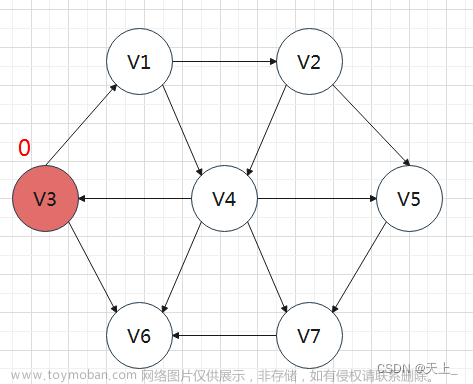单源最短路的扩展应用
AcWing 1137. 选择最佳线路
多源点单终点最短路建图:
- 创建虚拟源点(创建虚拟源点的时候以是spfa为例 可以在建图的时候建出来,也可以在spfa这直接入队,也是虚拟源点的意思)
- 反向建图变成单源点多终点,然后遍历终点的dist即可找出最短路
#include <iostream>
#include <cstring>
using namespace std;
const int N = 1010, M = 20010, INF = 0x3f3f3f3f;
int q[N], dist[N];
bool st[N];
int e[M], h[N], ne[M], w[M], idx;
int n, m, T;
void add (int a, int b, int c)
{
e[idx] = b, ne[idx] = h[a], w[idx] = c, h[a] = idx ++ ;
}
void spfa()
{
int scnt;
scanf("%d", &scnt);
int hh = 0, tt = 0;
while (scnt -- )//虚拟源点可以在建图的时候建出来,也可以在spfa这直接入队,也是虚拟源点的意思
{
int s;
scanf("%d", &s);
dist[s] = 0;
q[tt ++ ] = s;
st[s] = true;
}
while (hh != tt)//spfa循环队列,就是这样判断队列是否为空的
{
int t = q[hh ++ ];
st[t] = false;
if (hh == N) hh = 0;
for (int i = h[t]; ~i; i = ne[i])
{
int j = e[i];
if (dist[j] > dist[t] + w[i])
{
dist[j] = dist[t] + w[i];
if (!st[j])
{
q[tt ++ ] = j;
if (tt == N) tt = 0;
st[j] = true;
}
}
}
}
}
int main ()
{
while (scanf("%d%d%d", &n, &m, &T) != -1)
{
memset(h, -1, sizeof h);//多组数据,每组都要初始化
memset(dist, 0x3f, sizeof dist);
idx = 0;
//memset(st, 0, sizeof st); st不用初始化,出队的时候自动false,safa结束的时候st状态自动全是false
while (m -- )
{
int a, b, c;
scanf("%d%d%d", &a, &b, &c);
add(a, b, c);
}
spfa();
if (dist[T] == INF) dist[T] = -1;
cout << dist[T] << endl;
}
return 0;
}
AcWing 1131. 拯救大兵瑞恩
AcWing 1134. 最短路计数
这题挺简单的就不详细说了,主要是第一次遇到计数问题文章来源:https://www.toymoban.com/news/detail-573382.html
#include <iostream>
#include <cstring>
using namespace std;
const int N = 1e5 + 10, M = 2 * 2 * 1e5 + 10, mod = 1e5 + 3;//无向边M要开成两倍,wa了好几发
int n, m;
int e[M], h[N], w[M], ne[M], idx;
int q[N], dist[N], cnt[N];
void add(int a, int b)
{
e[idx] = b, ne[idx] = h[a], h[a] = idx ++ ;
}
void bfs()
{
memset(dist, 0x3f, sizeof dist);
dist[1] = 0;
cnt[1] = 1;
int hh = 0, tt = 0;
q[0] = 1;
while (hh <= tt)
{
int t = q[hh ++ ];
for (int i = h[t]; ~i; i = ne[i] )
{
int j = e[i];
if (dist[j] > dist[t] + 1)
{
cnt[j] = cnt[t];
dist[j] = dist[t] + 1;
q[++ tt] = j;
}
else if (dist[j] == dist[t] + 1)
{
cnt[j] = (cnt[t] + cnt[j]) % mod;
}
}
}
}
int main()
{
scanf("%d%d", &n, &m);
memset(h, -1, sizeof h);
while (m -- )
{
int a, b;
scanf("%d%d", &a, &b);
add(a, b), add(b, a);
}
bfs();
for (int i = 1; i <= n; i ++ ) printf("%d\n", cnt[i]);
return 0;
}
AcWing 383. 观光
在上一题的基础上拓展出来同时记录一个点到源点的次短路和最短路的条数文章来源地址https://www.toymoban.com/news/detail-573382.html
#include <iostream>
#include <cstring>
#include <queue>
using namespace std;
const int N = 1e3 + 10, M = 1e4 + 10;//单向边,我们不用×2
int cases, n, m;
int S, T;
int h[N], w[M], ne[M], e[M], idx;
int st[N][2];
int cnt[N][2], dist[N][2];//0表示最短路,1表示次短路
struct Ver
{
int id, type, dist;
bool operator > (const Ver &t) const//小根堆虽然是最小的在上面,但是重载的是大于号,sort是重载小于号
{ //而且小根堆是greater,就是告诉我们重载大于号的
return dist > t.dist;
}
};
void add (int a, int b, int c)
{
e[idx] = b, ne[idx] = h[a], w[idx] = c, h[a] = idx ++ ;
}
int dijkstra()
{
memset(dist, 0x3f, sizeof dist);
memset(cnt, 0, sizeof cnt);
memset(st, 0, sizeof st);
dist[S][0] = 0;
cnt[S][0] = 1;
priority_queue<Ver, vector<Ver>, greater<Ver>> heap;
heap.push({S, 0, dist[S][0]});
while (heap.size())
{
Ver t = heap.top();
heap.pop();
int id = t.id, type = t.type, distance = t.dist, count = cnt[id][type];
if (st[id][type]) continue;//放在while里面 for循环外面,dij的本质就是每个点都是贪心出来的最小的,只用这个点松弛一次其它边就行了
//
st[id][type] = true;
for (int i = h[id]; ~i; i = ne[i])//找到当前点的领边,用当前点去松弛
{
int j = e[i];
if (dist[j][0] > distance + w[i])//如果到j点的最短路可以更新,那么把次短路更新为之前的最短路,把最短路更新,两个都入堆
{
dist[j][1] = dist[j][0], cnt[j][1] = cnt[j][0];
dist[j][0] = distance + w[i], cnt[j][0] = count;
heap.push({j, 1, dist[j][1]});
heap.push({j, 0, dist[j][0]});
}
else if (dist[j][0] == distance + w[i])//找到一条到j点的新的最短路
cnt[j][0] += count;
else if (dist[j][1] > distance + w[i])//如果到j点的次短路可以更新,那么把次短路更新,并且入堆
{
dist[j][1] = distance + w[i], cnt[j][1] = count;
heap.push({j, 1, dist[j][1]});
}
else if (dist[j][1] == distance + w[i])//如果找到一条到j点的新的最短路
cnt[j][1] += count;
}
}
int res = cnt[T][0];
if (dist[T][0] + 1 == dist[T][1]) res += cnt[T][1];
return res;
}
int main ()
{
scanf("%d", &cases);
while (cases -- )
{
scanf("%d%d", &n, &m);
memset(h, -1, sizeof h);
idx = 0;
for (int i = 0; i < m; i ++ )
{
int a, b, c;
scanf("%d%d%d", &a, &b, &c);
add (a, b, c);
}
scanf("%d%d", &S, &T);
printf("%d\n", dijkstra());
}
return 0;
}
到了这里,关于算法提高-图论-单源最短路的扩展应用的文章就介绍完了。如果您还想了解更多内容,请在右上角搜索TOY模板网以前的文章或继续浏览下面的相关文章,希望大家以后多多支持TOY模板网!













